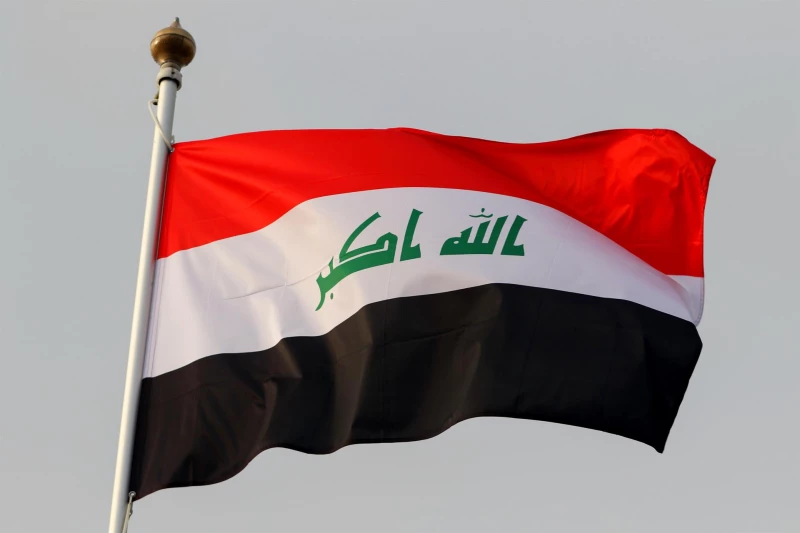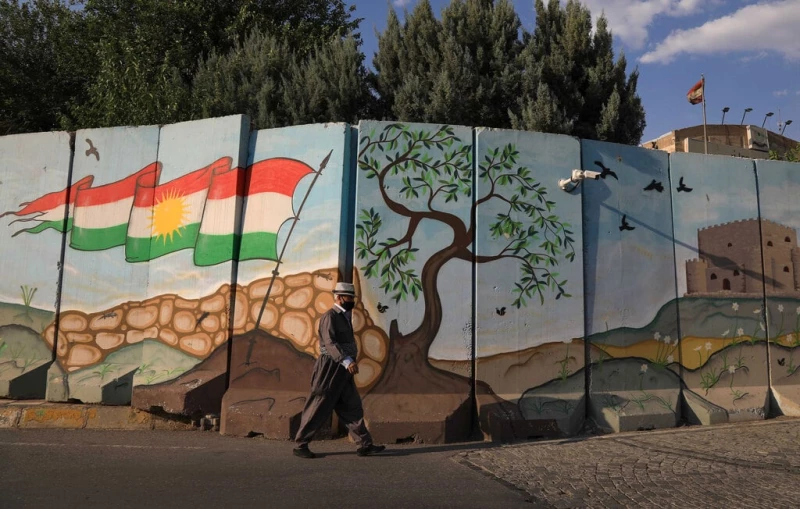Parties representing Iraq’s Sunni community are known to be the most divided among the political factions in the country.
Alliances between them are chronically fragile and unstable, as exemplified by the prompt severing of connections between them following the re-election of now-former parliament speaker Mohammed al-Halbousi in January 2022.
That election was followed by a phase in which they sought to further divergent interests, then a disintegration of alliances, and then yet another coming together for the purposes of producing a new head of the legislative authority.
Iraq’s Sunnis tend not to involve religious figures in their politics; instead, they have long bestowed leadership on whoever is at the forefront of the political scene in a sort of realpolitik, experts told The New Region in interviews conducted in early December.
‘The only true Sunni leader’
According to Center for Political Thinking director Ihsan al-Shammari, whoever is Iraq’s parliament speaker is effectively the only true ‘Sunni leader’.
Shammari said that this has led to “the decline of any Sunni political figure unless he holds a high position”, namely that of any of either parliament speaker, prime minister, or president.
According to the unofficial ethno-confessional system in place in Iraq in the post-2003 period, only the parliament speakership is open to Sunni Arabs while the prime minister is a Shia Arab and the president from the Kurdish community.
Shammari contrasted this with the Iraqi Shia community, “whose parties depend on the duality of religious and political leadership”.
“The multiplicity of religious, political, and social figures has led to multiple leadership positions among the Shia component,” he noted.
The removal of parliamentary speaker Mohammed al-Halbousi in mid-November indicates a leadership struggle within the Sunni component.
“Removing Halbousi from his position is part of the Sunni leadership struggle, especially since Halbousi established his power by excluding the rest of the Sunni political leaders,” Shammari noted, and this “has resulted in the [political] conflict spreading to Halbousi’s own province, Anbar, for the first time.”
“This was caused by Halbousi’s inability to keep other Sunni leaders in check in addition to the Shia Coordination Framework’s fostering of these conflicts for the sake of eliminating the only true Sunni leadership,” he added.
Background of Sunni fragmentation
The roots of Sunni leadership being linked to the position of parliament speaker go back to 2005, when the first parliament was elected.
Jalal Talabani was elected president of the republic in April of that year with Ghazi Ajil al-Yawar and Adel Abdul Mahdi as his deputies. Ibrahim al-Jaafari was elected prime minister.
Sunni representatives boycotted the elections in the three provinces of Nineveh, Salahuddin, and Anbar at that time. It was only later that the position of parliament speaker became set aside for them in the de facto power-sharing system that remains in place today.
Hajim al-Hassani was the first Sunni to be chosen for the position, in May 2005. After Hassani left his position, he disappeared from the political scene.
Iyad al-Samarrai took on the position in 2009 for a short period before it went to Osama al-Nujaifi, who held it from 2010 until the end of his term.
Following the end of his term, Nujaifi attempted to lead alliances and continue leading his party. However, other figures and alliances emerged to push him aside, as he no longer possessed the decision-making power he had as speaker of the parliament.
The same happened to Saleem al-Juboori, who became speaker in 2014 but lost all authority after his term.
It was in September 2018 that Halbousi’s era began. The Sunni leadership then became linked to the Anbar province, whereas it had previously been based in Nineveh and Diyala.
In the years since, several Sunni political alliances have emerged. The most prominent is the Arab Project, led by Khamis al-Khanjar.
Then came Ahmed al-Jubouri – better known as Abu Mazen – as well as Mishaan al-Jubouri and Muthanna al-Samarrai. All of these figures sought a sort of leadership and popularity not linked to the speakership.
Halbousi was elected speaker and by association the leader of what is known as the ‘Sunni house’, as was the case with those that came before him.
However, his ousting in November evinced weakness among Sunnis at the political level and the lack of any real leadership that could manage the crisis. This was in part due to the fact that all the alliances went through a fragmentation process following the 2021 elections, making it difficult to reach common ground and leaving them vulnerable to interference from other forces.
Former Nineveh governor and prominent Sunni politician Atheel al-Nujaifi explained the absence of a sole Sunni leadership by saying that the Sunni community is neither a sectarian nor ethnic group but rather a “people”.
The leadership of a large group of people, he noted, can only be through political leaders who command the trust of a large number of the public.
“The absence of Sunni leaders is due to not giving a role to Sunni aspirations,” he stressed, and instead having to work within the framework established by Shia parties.
“I believe that Sunni leadership will re-emerge,” he added, “but gradually, after Shia parties are assured that the different perspectives within the Sunni community are not a part of a state of hostility towards them but rather something to integrate within the general situation in Iraq as a whole.”
Shia and Kurdish factions, compared
The roots of most Shia political forces are religious authorities and parties that were established on the basis of religion and jurisprudence, which led to their stability despite various upsets. This led to their being able to rely on an ideological base even before needing to create political backing coalescing around current leaders.
As concerns the Kurdish community, the parties representing them are linked to political and social leaders that serve as symbols for them, such as the late Jalal Talabani, who long served as president of the Patriotic Union of Kurdistan (PUK) party as well as Iraqi president. His approach is the one the party and its loyalists still adhere to.
The same is true for PUK’s main rival, the Kurdistan Democratic Party (KDP), which still clings to former Kurdistan Region president Masoud Barzani as a symbol and as their leader. He is the one who mediates - especially in major political crises - despite the emergence of a new generation of leaders within the party.
What the Sunni political scene is instead exposed to when it comes to leadership is that it is linked to “political and social leadership more than to religious leadership,” political analyst Ghaleb al-Daami said.
“Which is why Osama al-Nujaifi was leader and then Saleem al-Juboori and then Halbousi. The matter is linked to the parliamentary speaker position, meaning whoever holds the position is the leader,” Daami said.
He added that “this idea has recently become different within the Sunni component [of the Iraqi political scene], as there are many Sunni figures who do not hold any office but have become a symbol of the Sunni areas and their political process, which shows that the Sunnis have begun to leave the stage of political leadership.”
The closed circle around which Sunni blocs revolve has not yet produced real leadership that could have significant influence, he said.
Rather, it has focused on handing over power and leadership together to one person and then searching for an alternative, leaving the various Sunni blocs in a state of constant rivalry.
Since the leader’s role ends completely following his departure from office, a key figure in the Sunni political scene will not emerge to the extent seen among Iraq’s Shia and Kurdish political groupings, he said.
The two latter groups continue to rely on political and religious authority in their decisions and hold on to figures who previously held positions of power, endowing them with top leadership roles even after they leave office.
Daami added that leadership associated with religion is however also very temporary.
Shia leadership has long been linked with religious leaders, he noted, “and the inability of some figures to find a place for themselves among the public has led them to associate themselves with religious leadership in a bid to gain strength. However, that too is temporary since religious figures may abandon them at any moment.”
The only type of “leadership that is permanent is one that is self-built,” he opined.


 Facebook
Facebook
 LinkedIn
LinkedIn
 Telegram
Telegram
 X
X



